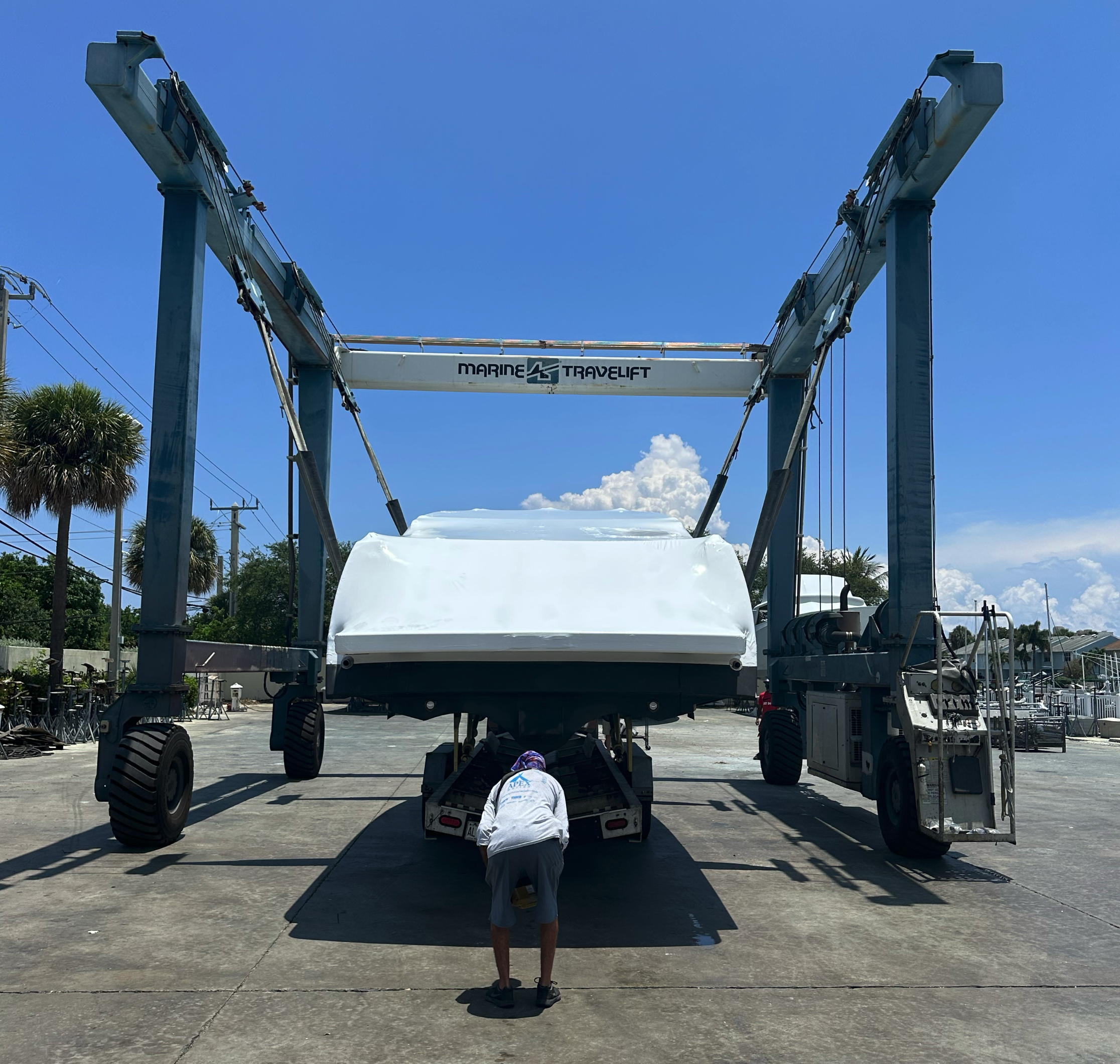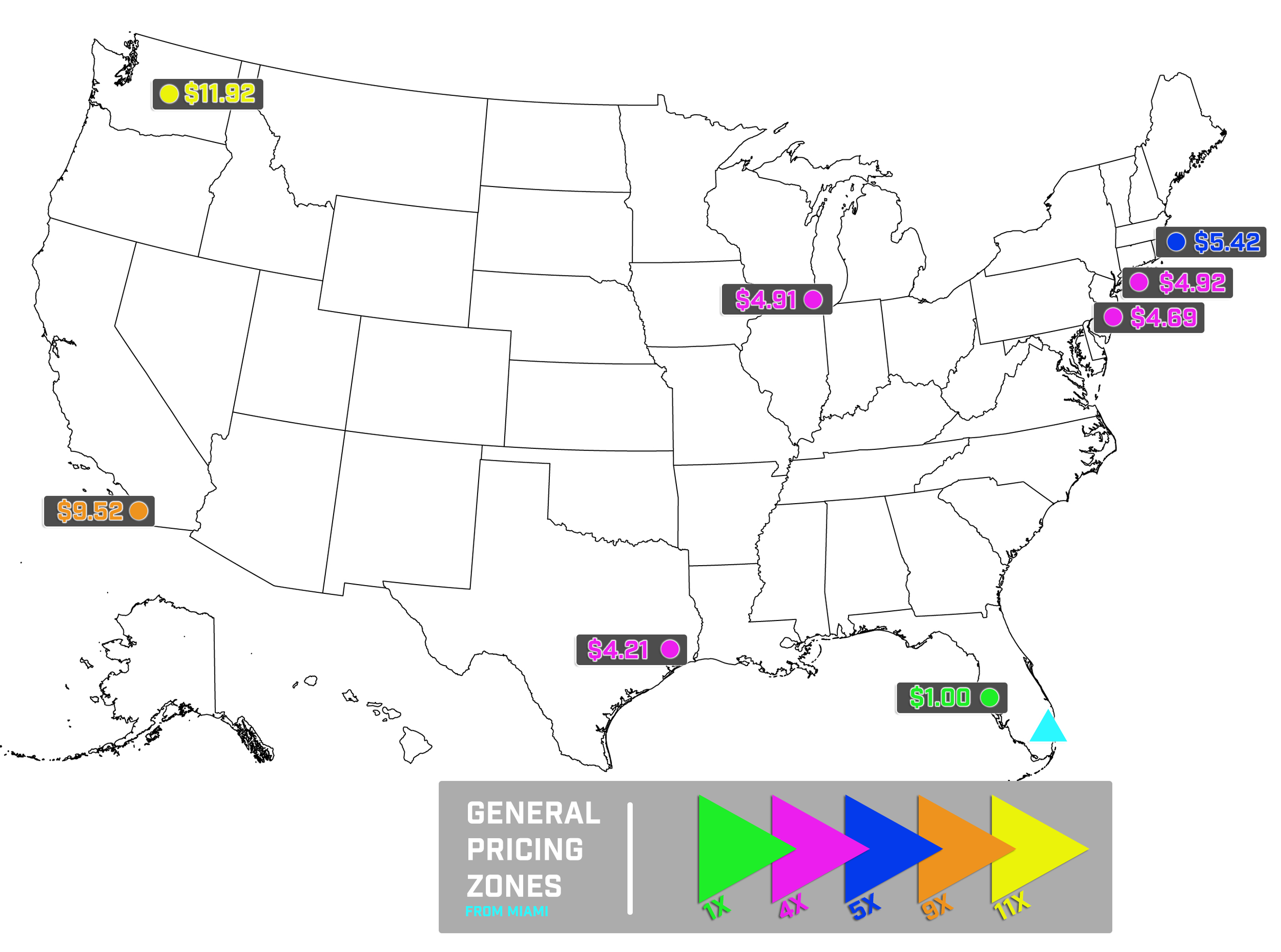A quick Guide to Road Transport
Don’t Take Your Transporter for granted.
Managing your boat is hard, but when it gets on wheels is not the time to relax.
I’ve been working in the industry for seven years; not long by any means, yet enough to break through the smoke and mirrors. I’ve seen the good and bad of the transporter world. Some pickup the load, communicate and drop-off without issue. Some go missing for 10 days and say you call too much after you’re reconnected.
Our economics professor taught us the rules of supply and demand: as transporters get scarce, their prices will rise. A good transporter is worth their weight in gold, and they are getting harder and harder to find. In this post we’ll discuss a few keys to transporting your boat, what to look for in a good transporter and what costs to expect while shipping.
Keys to Successful Transportation
I could write a lot here. I’ll keep it brief.
Communication & Mood
The biggest variance I see in transporters is the combination of communication and mood. It may seem disconnected from the priority of a safe delivery, yet these factors transcend through the entire experience. When your expensive boat is missing along the eastern seaboard there’s no one else to turn to but your transporter. Unreachable or unwilling to talk is an anxiety booster. Have a rapport with your driver prior to their departure and try setting up checkpoints where they are to provide updates.
PROOF OF INSURANCE
Don’t forget it. You want to have a policy certificate stating your cargo value and naming you as additional insured on their policy. Should things go south you have the policy information and who to contact. Don’t let your cargo leave without having this very important piece of paper. If you paid to increase the limits, make sure you see those limits on the certificate, otherwise they likely aren’t there.
Discuss RoadBlocks and Restricted Areas
Holidays, events and large gatherings can cause traffic, which in turn, delays your delivery. A driver who mentions these potential roadblocks ahead of time is looking out for your mutual interest. And most drivers do look ahead; this is not speaking on the majority.
Give the Right Weight
When your transporter asks the weight of your boat, it may come off as secondary. Truth is, its a liability factor. Giving the wrong weight - especially if your boat is heavier than what you provide - can endanger the equipment, the driver, and your safe delivery. If your underestimated weight breaks the trailor and/or your boat, its you (or your insurance) covering the costs.
Pro tip: When your boat is hauled and loaded to the truck, MAKE SURE you get a weight reading from the shipyard lift. This is the last
BE RESPECTFUL
While we have our requirements of drivers, we are also required to respect the driver’s privacy and well-being. Delays caused by weather or traffic are not within the driver’s management capabilities. I’ve seen plenty of emotional disputes do battle at the destination, where a he said/she said results in a driver’s retention of the boat, or a customer’s willingness to pay for a successful delivery.
WHAT ARE THE ASSOCIATED COSTS?
I see customers frequently getting caught up in just the transportation fee, forgetting hidden fees lurk in the shadows. Use this as a guide to make sure you have a clear outlook on your total cost before shipping your boat next time.
Haul and load can vary in price, from $10-20/foot.
Truck Transport - your main charge and the largest of the bunch.
Cargo Insurance - transporters run with a certain amount of insurance, but that doesn’t mean your cargo is completely covered. If your vessel’s value is above the total cargo coverage your transporter operates with, you need to purchase additional cargo insurance.
Shrink Wrap - everyone has their opinion, but if you want to wrap early, ask your vendor to include a zipper so you can get into the boat while you wait.
Haul Out and Load Fees x2 - you’ll need to pay a yard to lift your boat and load it onto a trailer. But don’t forget, you’ll have the same fees at the end destination.
Delivery Fees - you may need to pay a captain to move the boat to the departure shipyard, or move the boat from the delivery shipyard to your home slip.
Delays - if you delay the truck, you’ll likely be charged a fee for them to sit and wait.
*For questions on international truck transport, contact us.
How Should Things Price?
Loaded question, but we’ve done a little research to help. Through our friends at HL Knight Transport, we’ve quoted six popular destinations from Miami, FL. Through our map you can see how your travel distance can affect the multiple at which you pay. These numbers can vary, based on your load length and cargo insurance requirement.
For every dollar you spend going from Miami, FL to Tampa, FL, you’ll spend:
$4.21 going to Houston, TX
$4.69 going to Jersey City, NJ (Liberty Landing)
$4.91 going to Chicago, IL
$4.92 going to East Hampton, NY
$5.42 going to Cape Cod, MA
$9.52 going to San Diego, CA
$11.92 going to Washington State
More questions? Contact us via email at hello@rnmarine.com.



